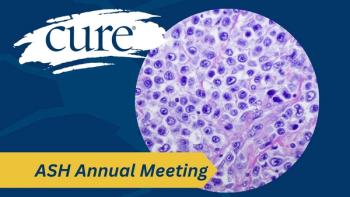
Clinical Trial to Offer Insight Into Newly Diagnosed Patients With Glioblastoma
Glioblastomas are difficult to treat, but researchers are hopeful that clinical trials will lead to new developments.
One of the greatest ways to learn more about a specific tumor type and to see which drugs have positive responses in patients is through clinical trials. This is especially important in the treatment of glioblastoma (GBM) — a fast-growing, brain tumor that has a low five-year survival rate.
Brian Alexander, M.D., M.P.H., disease center leader for radiation oncology in the Center for Neuro-Oncology at the Dana-Farber Cancer Institute in Boston, is recruiting newly diagnosed patients with GBM for a clinical trial called the INdividualized Screening Trial of Innovative Glioblastoma Therapy (INSIGhT).
He and colleagues will be testing three different kinds of therapies — abemaciclib, neratinib and CC115 — at the same time, and testing them against the control arm, which will be receiving Temodar (temozolomide) and radiation therapy.
What do you anticipate to happen in the INSIGhT trial?
In an interview with CURE, Alexander discussed the hypothesis of the trial, biomarkers for evaluating patients and what he’s excited about for the future of GBM.Our hypothesis is that one of these drugs will improve survival for patients with glioblastoma. The way that we do clinical studies is to first see if something looks promising in the lab, then see if it looks safe in patients and finally test to see whether it looks like it’s doing anything that a patient would consider important like improving their life or extending their life.
For glioblastoma trials, it is really tricky to understand whether a drug is working if you just run a trial with one experimental arm and no comparison. We have been fooled before in this disease where something looks good, but it’s only because we are selecting the right patients.
Are there certain biomarkers that can be evaluated for GBM?
So, this is a randomized trial. Patients hear that a lot and don’t like that because they want to go on an experimental therapy. That’s why they are going on a trial. We have tried to have a compromise here where we have a platform trial and we are using one control arm to test really three different therapies at the same time. We’re conserving that control arm, which makes it more likely that a patient is randomized to an experimental therapy.The biomarkers that we are interested in are the ones that predict the patients that are going to respond to any given therapy. We don’t know very much actually in this tumor. We know a lot about the biology of the tumor. We know a lot about the molecular abnormalities of the tumor, but we don’t know how much those molecular abnormalities mean in terms of predicting response to any therapy.
Why is GBM so difficult to treat?
But, what we have set up in this trial is a system by which that data will be generated and used during the course of the trial, so we do sequencing on the tumors to get the most up to date genetics that we can. Instead of just guessing what those genetics mean, we try to learn about them during the trial. We set up that system within the trial to learn what those specific biomarkers mean.A lot of therapies that have worked in other cancers don’t work for GBM. Some of the reasons people have put forward to explain that are that the glioblastoma biology is a little different, where there is a lot of different abnormalities involved in the DNA of a glioblastoma — not one specific abnormality that is driving the tumor that if you just block that then the tumor responds.
What do you expect in the future treatment of GBM?
Also, being in the brain has always been thought of a barrier, both for the development of drugs and a physical barrier, where drugs are kept out of the brain. The body tries to keep toxins, like a lot of these drugs, out of the brain. If it gets in, it pumps them out. That’s been hypothesized as one of the reasons why a lot of these drugs don’t work for GBM. We don’t know if that’s true for all cases.It’s a very exciting time for a number of reasons. I think there are lots of people thinking about just different paradigms for treating tumors in general. We have targeted therapies to molecular abnormalities and tumors, we have immunotherapies. Things that target metabolism. There are broad classes of ways to treat tumors. There’s lots of new ones coming up with new ideas within those categories.
With regards to GBM, we have learned a lot about the tumor, just as much or more of any tumor, through a lot of efforts to understand the genetics and biology of the tumor. Now is maybe the time when we are starting to use that information to improve treatment. I think what INSIGhT is as a trial is trying to speed up the ability to test those hypotheses. I think what we have are lots of different ideas and we don’t have the systems to test them efficiently. What we are trying to do here is make a system by which more patients have an opportunity to enroll on clinical trials during the course of their therapy. We learn more from every patient because in order to sort through all of these ideas that people are coming up with we need to be able to kind of test them in lots of different patients.





